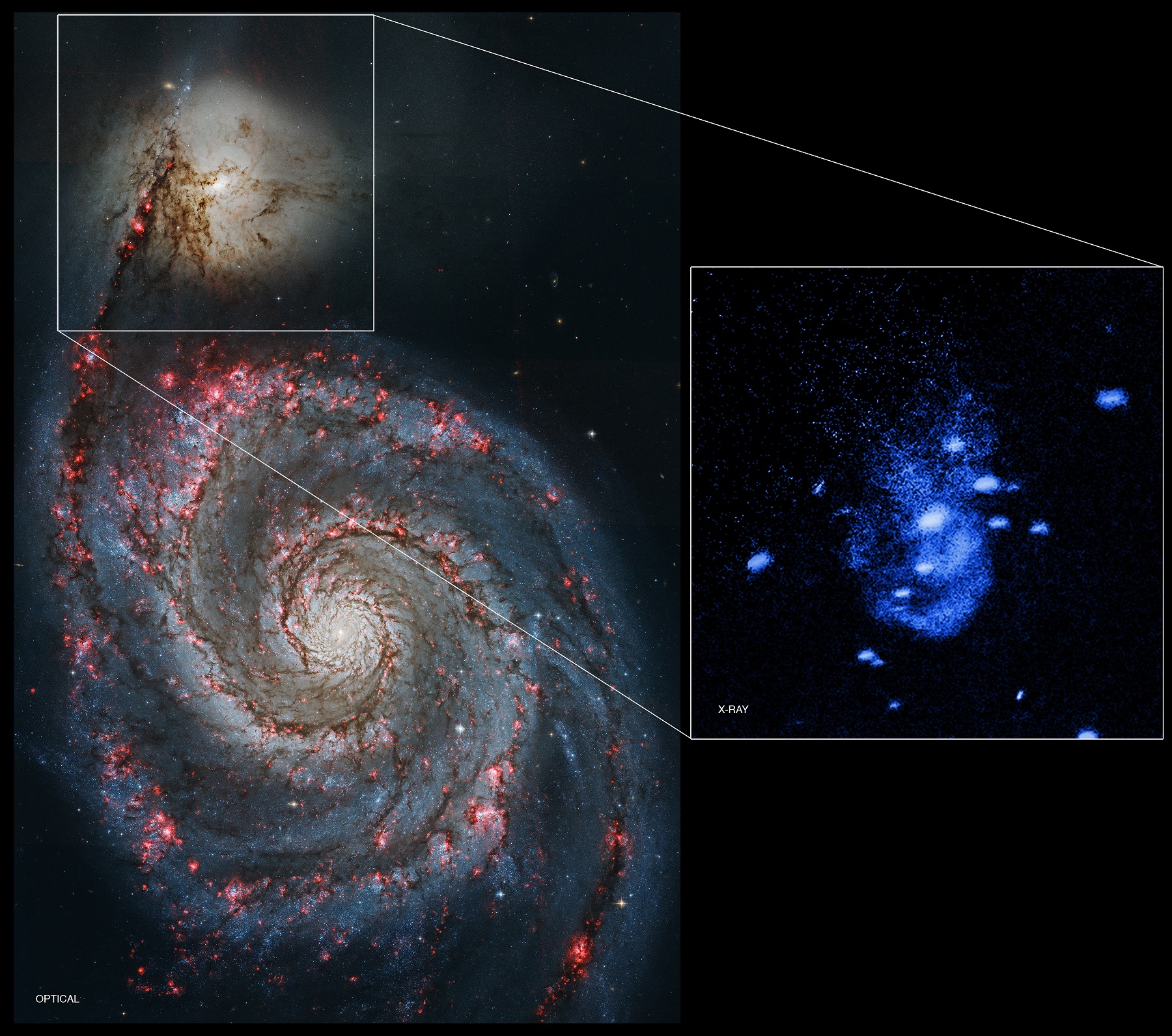Astronomers using NASA’s Chandra X-ray Observatory have discovered that a nearby supermassive black hole is generating powerful outbursts of x-ray emissions. NASA’s Chandra X-ray Observatory is an in orbit telescope and is designed specifically to record x-ray emissions in space.
These cosmic outbursts, commonly referred to as “burping”, were discovered in a small galaxy called NGC 5195. NGC 5195 is part of the larger Messier 51 galaxy which is located 26 million light years away. This supermassive black hole is one of the closest black holes to Earth.
The emissions captured by NASA’s Chandra X-ray Observatory are said to be millions of years old. The two x-ray arcs in the image are said to be bursts from the galaxy’s supermassive black hole. The first x-ray arc is estimated to be between one and three million-years-old, and the second is estimated to be between three and six million years old.
In an image from the Kitt Peak National Observatory, a small region of emissions outside of the second x-ray arc was observed. Astronomers refer to this region of emissions as “feedback” which impacts a black hole’s “host galaxy“, in this case NGC 5195. NGC 5195 is part of a collective of galaxies, including the Messier 51 galaxy, known as “The Whirlpool”.
According to NASA, co-author of the study Marie Machacek of the Harvard-Smithsonian Center for Astrophysics (CfA) asserts that these findings are important because, “This shows that black holes can create, not just destroy.” Co-author Christine Jones, also of CfA, told NASA that, “This activity is likely to have had a big effect on the galactic landscape.”
For an analogy, astronomers often refer to black holes as ‘eating’ stars and gas. Apparently, black holes can also burp after their meal.
Eric Schlegel, of the University of Texas San Antonio who led the study, stated in a press release from the Chandra X-ray Observatory this week that, “For an analogy, astronomers often refer to black holes as ‘eating’ stars and gas. Apparently, black holes can also burp after their meal.”
























